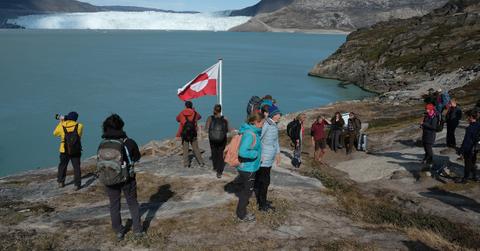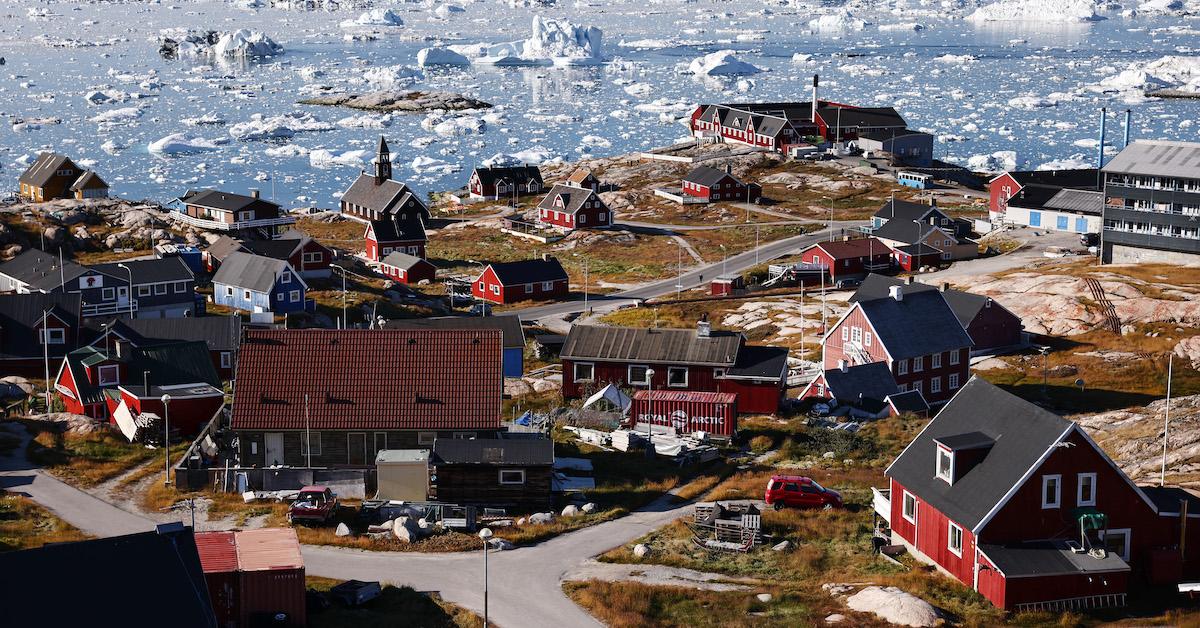The U.S. Doesn't Own Greenland — But There Was a Time Some Claimed It Did
While there's no question the United States doesn't currently own Greenland, there was a time in the 19th century where that was under some dispute.
March 1 2022, Published 2:39 p.m. ET

The island of Greenland, an icy tundra that lies across Baffin Bay from Canada, is geographically part of North America, but geopolitically European as an autonomous territory of Denmark. However, there has been a history of U.S. claim on much of the region, as well as several proposals or considerations of proposals to annex the island to the United States.
So, did the United States ever own part of Greenland?
The confusion over whether the U.S. has ever owned Greenland comes from the fact that, while the island has long been part of the kingdom of Norway-Denmark and, after Denmark gained its independence, a Danish territory, much of its arctic expanse was unexplored until the mid 19th century.

American explorers Charles Francis Hall and Robert Peary were the first known people of European descent to see the northern reaches of Greenland. Hall saw the northwest of the island in his Polaris expedition, which sought to reach the North Pole, while Peary, who claimed to be the first to reach the geographic North Pole, reached the northernmost point of Greenland during his expeditions.
It's important to point out that these explorers were likely preceded by Inuit inhabitants of the island. Like many territories claimed by Europeans over the past several centuries, Greenland has an indigenous population who have inhabited it for millennia. Currently, while the island is a territory of Denmark, it has taken increasing steps toward autonomy since 1953. Greenland has its own prime minister and parliament. Its relationship to the kingdom is closer to Canada's relationship to the British Commonwealth than it is to, say, Puerto Rico's relationship to the United States.
However, back when we had an even more Eurocentric view of the world and overlooked the indigenous populations of places that were new only to the Europeans who landed there, explorers like Peary and Hall gave real credence to an American claim on parts of Greenland. If you came and you saw, then you conquered.
There was still plenty of ambiguity until World War I, though. In a deal to purchase the Danish West Indies (the islands of St. Thomas, St. Jan, and St. Croix), the U.S. rescinded its claims on parts of Greenland and recognized Danish sovereignty, much to the protest of Peary.
The U.S. does have a sizable air base in Greenland.
During Germany's occupation of Denmark in World War II, the U.S. made a treaty with the Danish ambassador to establish a military base in Greenland. However, the Danish government renounced the agreement and after their liberation at the end of the war sought to take back the bases.
Though there was some tension in the years following WWII, once Denmark joined NATO, they largely backed off from their intentions to reclaim the area that would become Thule Air Base, the United States' northernmost military outpost. As of 2020, the base has been under U.S. Space Force command.
Former President Trump discussed purchasing Greenland in 2019.
The discussion of possible U.S. ownership of the island came up once again a few years ago when Trump considered a proposal to buy Greenland. However, even talks of such a proposal were brutally dismissed by Greenland's leadership and slightly more diplomatically by Denmark's Prime Minister Mette Frederiksen who simply indicated that Greenland wasn't for sale and that Denmark doesn't even "own" the country. The former Danish Prime Minister thought it must be an ill-timed April Fool's joke.
So, in summary, the U.S. has never formally owned Greenland and, today, nobody owns Greenland except for Greenland.
